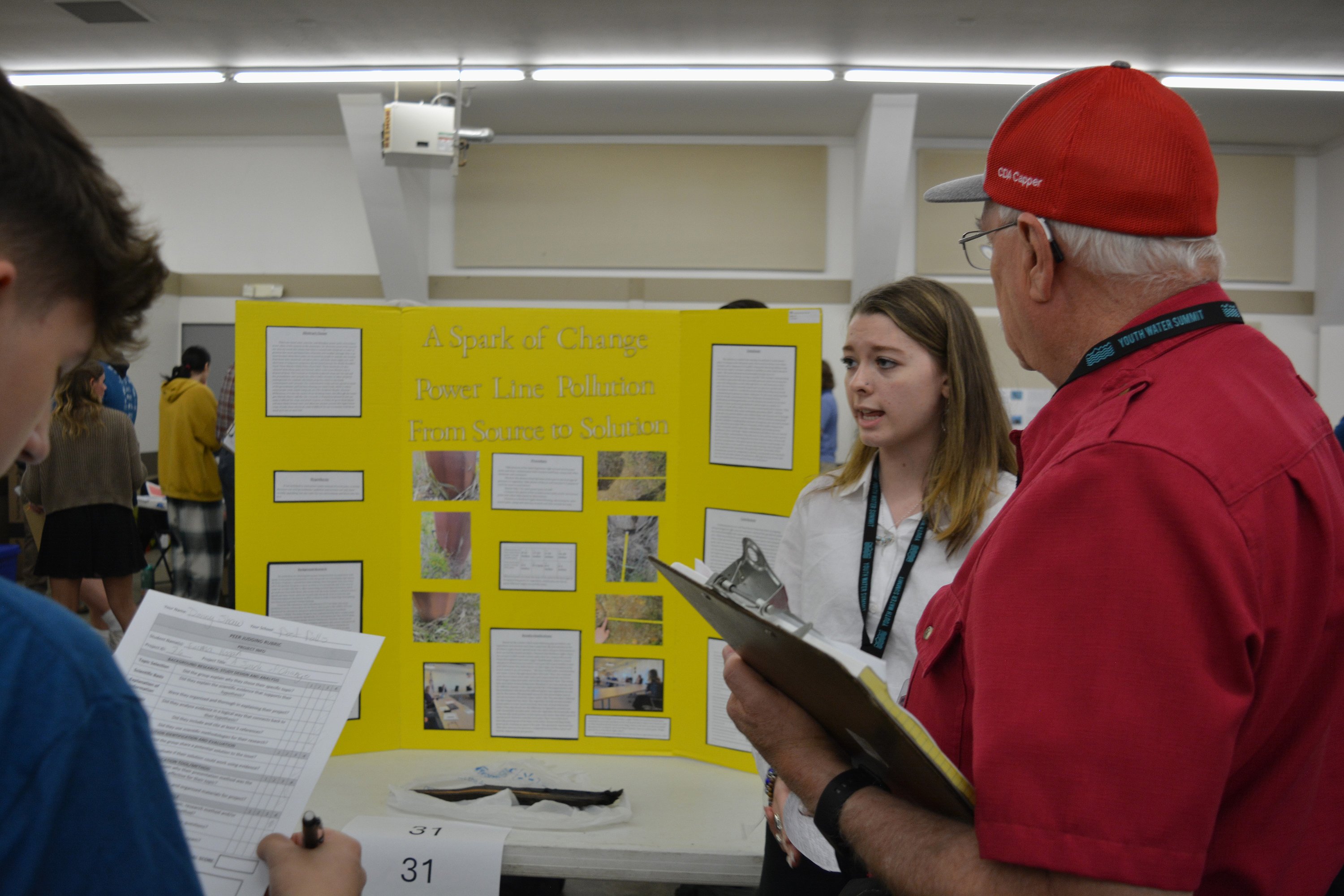Students present on environment at Youth Water Summit
CAROLYN BOSTICK | Hagadone News Network | UPDATED 5 months, 3 weeks AGO
Carolyn Bostick has worked for the Coeur d’Alene Press since June 2023. She covers Shoshone County and Coeur d'Alene. Carolyn previously worked in Utica, New York at the Observer-Dispatch for almost seven years before briefly working at The Inquirer and Mirror in Nantucket, Massachusetts. Since she moved to the Pacific Northwest from upstate New York in 2021, she's performed with the Spokane Shakespeare Society for three summers. | May 22, 2024 1:00 AM
COEUR d'ALENE — It was a rotating showcase of scientific discovery as students took turns presenting their water-focused research projects at Tuesday's Youth Water Summit.
The Kootenai County Fairgrounds buzzed with energy as young scholars like Lake City High's Mars Hayes, Makena Rader and Mantej Singh shared findings from their environmental investigations. After forming hypotheses, conducting experiments and analyzing outcomes, they presented conclusions to judges throughout the day while also evaluating their peers' work.
For the Lake City trio, the focus was on how the Bunker Hill Superfund Site impacts water contamination levels in surrounding areas.
They looked for other research to align with their findings and then presented their research
"We learned that the water is actually cleaner in Heyburn State Park but that it’s still unhealthy, so we should take steps to restore the water to the way it used to be,” Singh said.
Fifty years after the Bunker Hill Superfund Site cleanup began, efforts are still at full tilt to protect, but the Lake City students recommend finding better ways to limit toxic substances by not using fertilizers and pesticides and reduce car exhaust into the environment to better improve conditions.
Kelly Hanson, who helped judge the competition, said the summit is a way for students to learn something he believes is at the heart of good communication. “We’re all in sales,” he said
Emma Hogan of Lake Pend Oreille High School based her project on the pollution from wood power poles. She decided to add community outreach to her scientific process.
“I thought of this project because I have two cousins who are lineman and my dad is in excavation, so they brought this to my attention that this was an issue,” Hogan said.
During her observations around the school area, she noticed a distinct difference between the wooden and steel poles. The wooden poles typically had a clear radius of about a foot and a half to two feet surrounding them, where no vegetation grew. In contrast, the steel poles were immediately encroached upon by climbing plants and other growth right up against the pole itself.
She decided to present her findings to the Northern Lights Electric Board.
“I advocated for steel poles and shared my research and what I learned. And it was really eye-opening. They taught me some things, and I taught them some things, so it was really cool,” Hogan said.
Afterward, the president of the Northern Lights Electric board president, Steve Elgar, contacted her congratulating her on the presentation.






